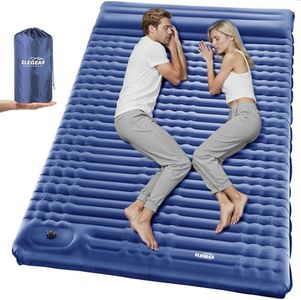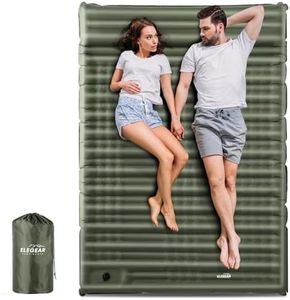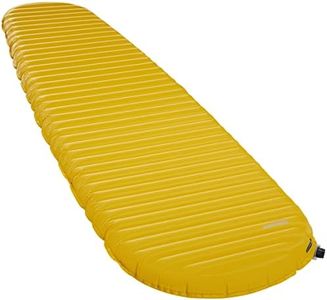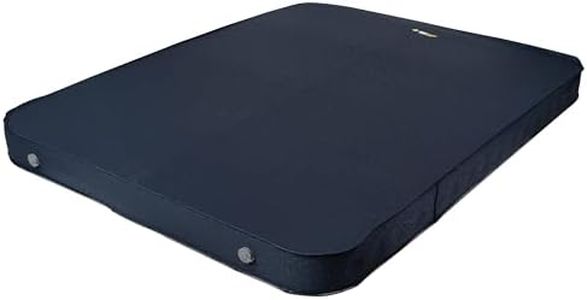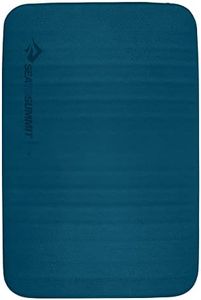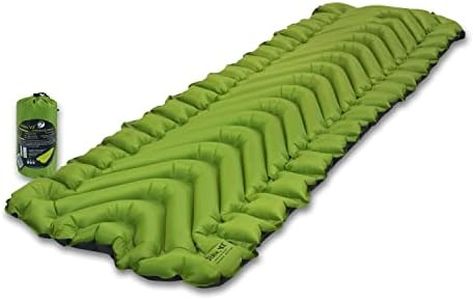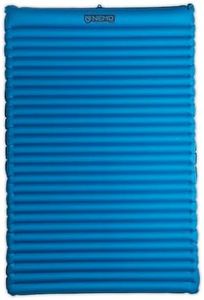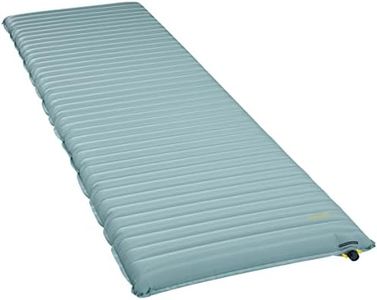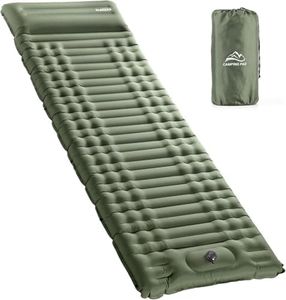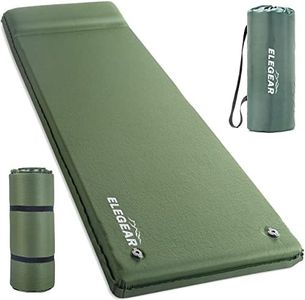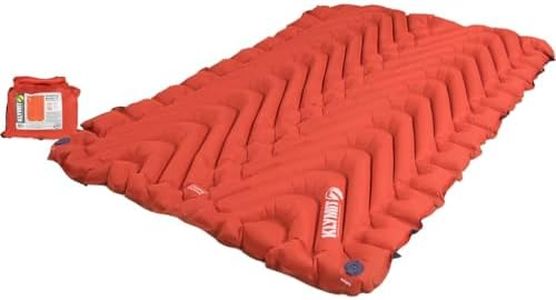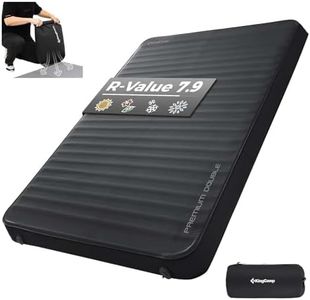We Use CookiesWe use cookies to enhance the security, performance,
functionality and for analytical and promotional activities. By continuing to browse this site you
are agreeing to our privacy policy
10 Best Camping Sleeping Pads
From leading brands and best sellers available on the web.Buying Guide for the Best Camping Sleeping Pads
Picking the right camping sleeping pad can make a huge difference in how well you sleep outdoors. The right pad will provide comfort, warmth, and portability, all tailored to your type of camping and personal preferences. Start by thinking about how you plan to use the pad—will it be for backpacking, car camping, or something else? Consider factors like how much space you have, how much weight you want to carry, and whether you’re sleeping in cold or warm conditions. These considerations help you match specific features to your needs, ensuring you have a restful night under the stars.Type (Foam, Self-Inflating, Air Pad)The type of sleeping pad you choose determines how it performs in terms of comfort, weight, and insulation. Foam pads are simple and durable, often ideal for backpackers who want a lightweight and reliable option; however, they can be bulkier to carry. Self-inflating pads blend cushioning and insulation, making them comfortable for most people and easy to set up—just open the valve and let air flow in. Air pads offer the most cushion and can pack very small, which is great for saving space, but some may be less durable on rough ground. Choose a type based on your camping style—if you’re hiking long distances, go lighter; if you want maximum comfort for car camping, try a plusher air or self-inflating pad.
R-Value (Insulation)R-value is a measure of how well a sleeping pad insulates you from the cold ground. Higher R-values mean better insulation, which is important in cold weather, while lower numbers are sufficient for warm conditions. Sleeping pads with R-values below 2 are suitable for summer camping, pads ranging from 2 to 4 work well for spring and fall, and anything above 4 is ideal for winter or cold sleepers. Your personal need depends on both the season and how cold you tend to get at night—colder campers should consider higher R-values, even in moderate weather.
Weight and Packed SizeWeight and packed size relate to how portable and convenient a sleeping pad is when traveling to your campsite. Lightweight and compact pads are crucial for backpackers who want to minimize their load, while car campers can prioritize comfort over portability. Backpackers typically look for pads under 1 pound, while car campers may not mind pads that weigh several pounds. Choose a pad that's easy for you to carry and pack based on how far you have to transport it.
Thickness and ComfortThickness determines how much cushioning you get and how well the pad levels out uneven ground. Thin pads (under 1 inch) are lightweight but may offer less comfort, mid-range (1–2.5 inches) pads balance weight and cushioning, and thick pads (above 2.5 inches) provide plush comfort, especially for side sleepers. Consider how sensitive you are to hard or lumpy ground and pick a thickness that matches your comfort needs. If you prioritize comfort or know you sleep on your side, aim for a thicker pad.
Length and WidthThe size of your sleeping pad should fit your body and sleeping habits. Standard pads are around 72 inches long and 20 inches wide, while shorter or wider versions cater to different bodies and preferences. Taller users need extra length, and those who move in their sleep or want more elbow room may prefer a wider pad. Think about your body size and how much space you need to sleep well—choose a pad that gives you room without adding unnecessary bulk.
Ease of Inflation and DeflationHow quickly and easily you can inflate and deflate your pad impacts how convenient it is to use, especially after a long day. Some pads require manual blowing, while self-inflating or pump-assisted designs minimize effort. If you value quick setup or often camp in high altitudes where blowing up pads can be tiring, seek out pads with user-friendly valves and inflation systems. Match this feature to how much effort you want to spend on camp setup.
Durability and MaterialsDurability is about how well a pad stands up to use and rough outdoor conditions. Pads made from thicker materials or with reinforced surfaces are better suited for rocky or harsh terrain, while ultralight models may require more careful handling. If you’re camping on rough ground or want a pad that lasts many seasons, look for tougher materials; if you’re careful and pack light, lightweight materials may be ideal. Your choice should reflect the environments you camp in and how much wear and tear you expect.

